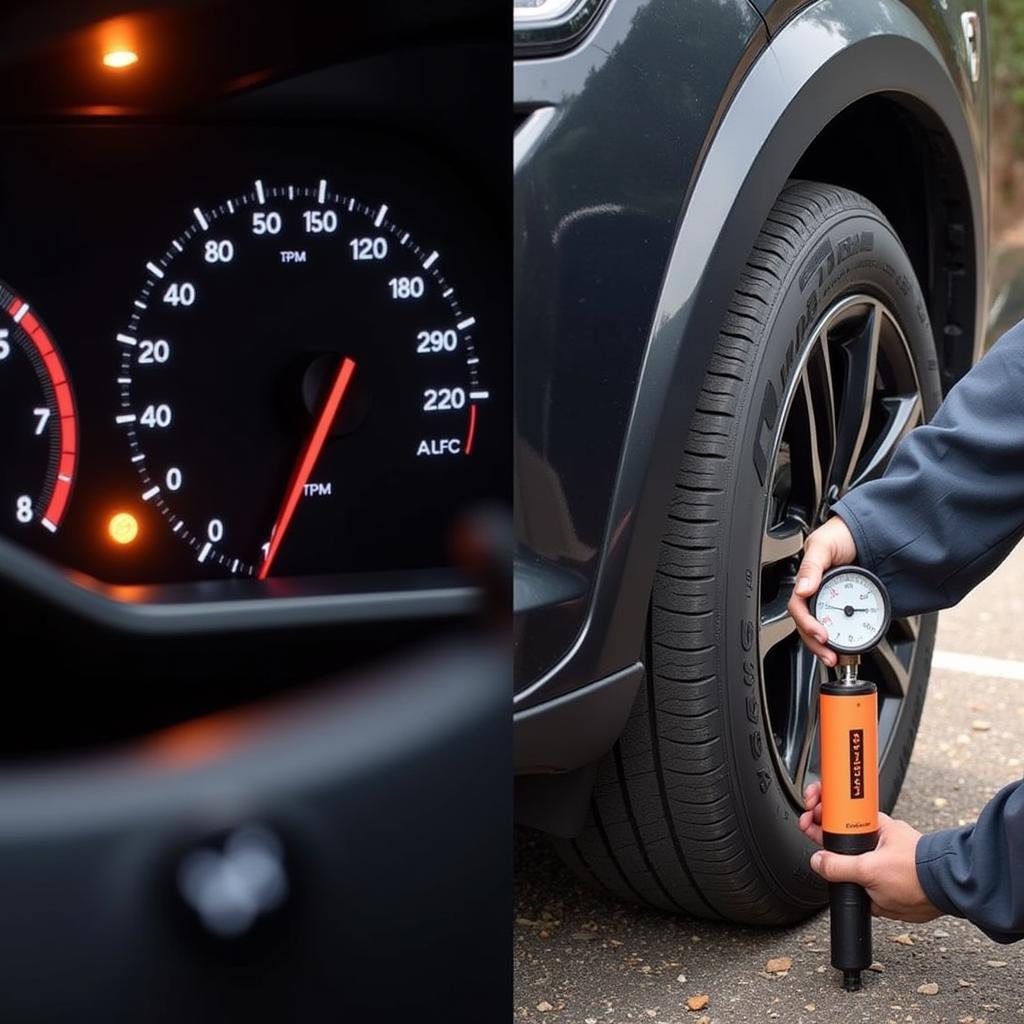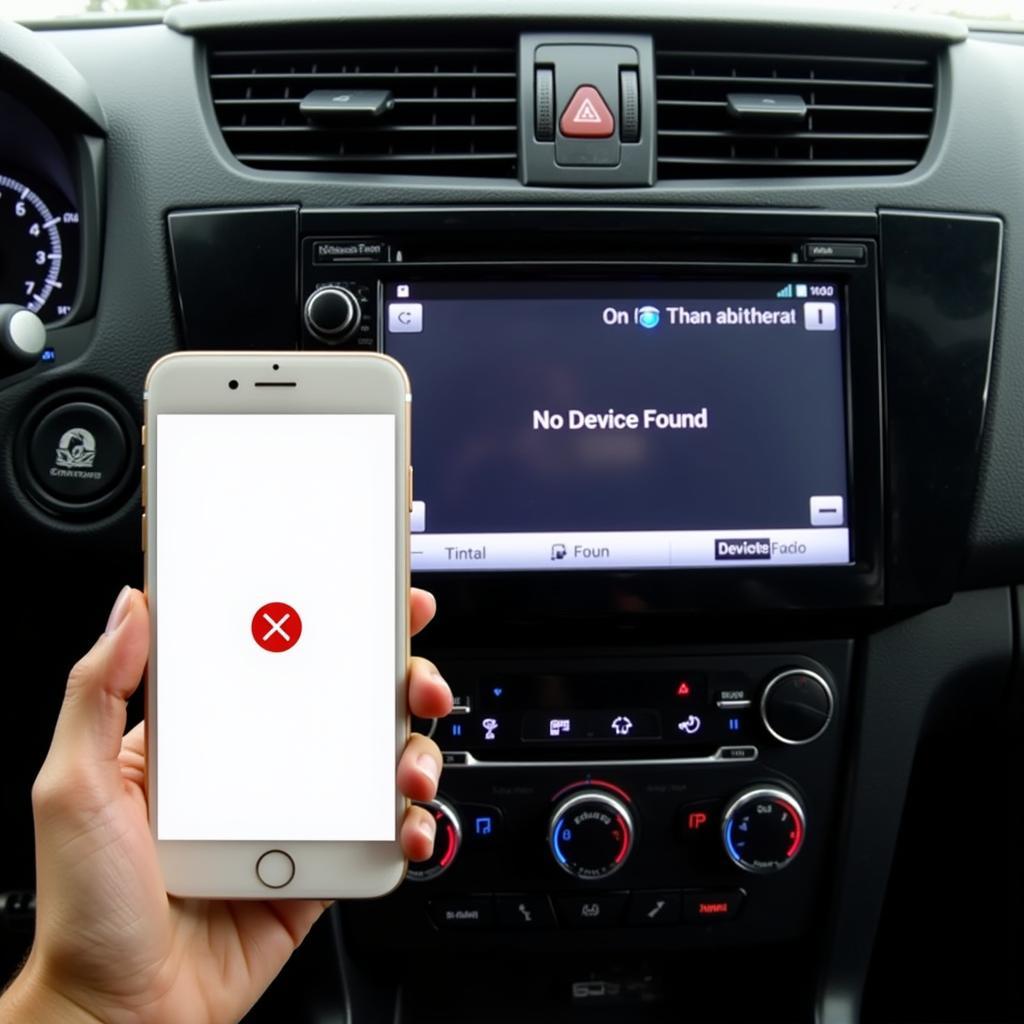A glowing warning light on your Seat Leon’s dashboard can be an unwelcome surprise. While it might trigger some anxiety, these lights are crucial for alerting you to potential issues before they become major problems. This comprehensive guide will delve into the common warning lights you might encounter in your 2010 Seat Leon and provide insights on how to address them.
 Seat Leon 2010 Dashboard Warning Lights
Seat Leon 2010 Dashboard Warning Lights
Understanding Your Seat Leon’s Warning Light System
The 2010 Seat Leon is equipped with a sophisticated onboard computer system that continuously monitors various aspects of your car’s health. When a potential issue is detected, the system triggers a specific warning light on your dashboard, often accompanied by a text message. These lights are color-coded for easy identification:
- Red: Indicates a serious problem that requires immediate attention. Continuing to drive could potentially damage your vehicle or put you at risk.
- Yellow/Orange: Signals a less severe issue that needs addressing soon. While you might not need to pull over immediately, ignoring these warnings for too long can lead to bigger problems down the road.
- Green/Blue: These lights generally indicate that a system is active and functioning correctly, like your headlights or cruise control.
Common Seat Leon 2010 Warning Lights and Their Meanings
While the owner’s manual provides a complete list, here are some of the most frequently encountered warning lights in a 2010 Seat Leon:
Engine Warning Light
 Seat Leon Engine Warning Light
Seat Leon Engine Warning Light
This light, often appearing as a yellow engine outline, signals a problem with the engine management system. It could be as simple as a loose gas cap or as complex as a faulty sensor. If the light is flashing, it indicates a serious issue requiring immediate attention.
What to do: Avoid driving and consult a mechanic or use a diagnostic tool to read the error code for accurate troubleshooting.
Brake Warning Light
This light can illuminate for various reasons, including low brake fluid, worn brake pads, or a problem with the ABS system.
What to do: Check your brake fluid level immediately. If it’s low, there might be a leak. If the light persists, get your brakes checked by a professional.
Related: brake warning light cold weather
Battery Warning Light
This light usually indicates a problem with the vehicle’s charging system, such as a failing alternator or a weak battery.
What to do: Get your battery and alternator checked as soon as possible. Driving with a failing charging system can leave you stranded.
Airbag Warning Light
An illuminated airbag warning light signifies a problem with the airbag system, such as a faulty sensor or wiring issue.
What to do: This issue requires immediate attention as a malfunctioning airbag system poses a significant safety risk.
Coolant Warning Light
This light typically indicates that your engine is overheating or the coolant level is low.
What to do: Pull over immediately and let the engine cool down. Check the coolant level and top it up if necessary. If the light persists, there might be a leak in the cooling system.
Tire Pressure Monitoring System (TPMS) Light
This light signals that one or more of your tires are significantly underinflated.
What to do: Check your tire pressure and inflate them to the recommended level.
 Seat Leon TPMS Light and Tire Pressure
Seat Leon TPMS Light and Tire Pressure
Beyond the Basics: Utilizing Remote Diagnostics
In today’s technologically advanced world, addressing warning lights in your Seat Leon can be easier than ever. Remote diagnostics and programming services are becoming increasingly popular for their convenience and efficiency.
“Remote diagnostics have been a game-changer,” says automotive electronics expert, John Miller. “With the right tools, we can now diagnose and even fix certain car problems remotely, saving car owners valuable time and money.”
Here’s how it works:
- You connect a specialized diagnostic device to your car’s OBD-II port.
- The device transmits your car’s data to the service provider.
- Expert technicians analyze the data, pinpoint the problem, and often provide solutions remotely.
This cutting-edge technology can be particularly beneficial for:
- Software updates and programming: Your Seat Leon’s software can be updated remotely, potentially resolving certain glitches or improving performance.
- Troubleshooting complex issues: For more intricate problems, remote diagnostics can help identify the root cause, saving you from unnecessary trips to the mechanic.
Conclusion
While warning lights in your 2010 Seat Leon can be alarming, understanding their meaning is crucial for ensuring your car’s health and your safety. This guide provides a starting point for understanding these warnings. However, remember to consult your owner’s manual for a complete list of warning lights and their meanings. By addressing these warnings promptly and utilizing available resources like remote diagnostics, you can keep your Seat Leon running smoothly for years to come.

